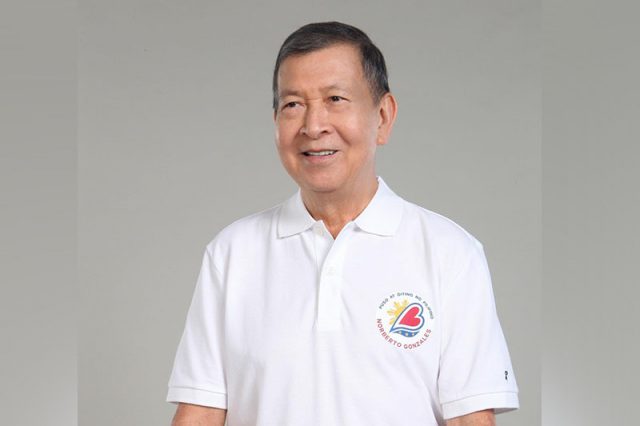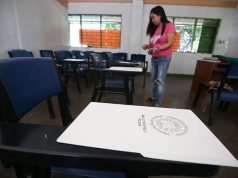
Electronic wallet users took to social media to explain how digital cash transfers work after a 2022 presidential bet claimed that mobile phones were being used for supposed vote buying at campaign rallies.
In an interview with CNN Philippines, former defense secretary Norberto Gonzales questioned the claim of fellow presidential hopeful Ferdinand Marcos Jr’s camp that at least 90% of the governors in the country are supporting him. This translates to 73 out of 81 governors.
The statement, according to reports, was not able to give a full breakdown of the 73 governors.
Gonzales then brought up the claim and said, “So what will he say on what these people will do during election time?”
“90% of the governors. So do you mean that what… you know, the practice of vote buying, they will have ballots. Nakalista doon there’s the president, there’s the vice (president), there’s the senators… wholesale ang bilihan, kung minsan,” he claimed.
Vote buying and selling is a clear election offense under the Omnibus Election Code.
According to the code, any person who gives, offers, or promises money or anything of value in order to induce anyone or the public to vote for or against any candidate or withhold his vote in the election is considered a violator.
It added that any person, association, corporation, group, or community who solicits or receives, directly or indirectly, any expenditure or promise of any office or employment, public or private, for any of the foregoing considerations, is also a violator.
“Then when somebody claims that 90% of the governors are with him, does this mean that 90% of the governors will cheat (on) his behalf? Will he agree? Will he consent? These are questions I want to ask,” Gonzales said, referring to his rival in the presidency.
The former national security adviser also said that he will formally write a letter to the Commission on Elections to address the vote buying concern.
He likewise suggested that authorities should be on an active lookout for suspicious money transfers before the day of elections.
“There are times, for example, that the Armed Forces move against this. They will establish checkpoints and confiscate big bank transfers, normally the night before the election or two nights, three nights, one week before the elections,” Gonzales said, referring to cases filled with cash.
“There were checkpoints where a lot of money was apprehended that I know of during past elections. Maybe they should do it again,” the former defense chief added.
Gonzales then raised concern about alleged vote buying practice at campaign rallies.
“Do you know that in some rallies, I will no longer name (candidates) ‘no, cellphones are being collected. Returned after the rally, meron nang GCash na nakalagay doon sa cellphone,” he claimed.
This comment earned attention from the local online community who speculated that Gonzales might not understand how digital transaction works.
A Facebook user shared a screengrab of his words and said, “Sir, sir… that’s not how GCash works…”
This post has earned 19,000 laughing reactions, 7,100 shares and 10 comments on the social networking platform so far.
Gonzales’s remark also went viral on Twitter, where some users told him to “familiarize” himself “with how technology works” before spreading such information.
Kakie Pangilinan, daughter of vice presidential candidate Sen. Kiko Pangilinan, reacted: “libreng app installation omg.” Her tweet was accompanied by grinning face with star eyes emoji.
“Free installation ng GCash wow, so cool,” a Twitter user agreed.
“Apparently, he does not know how GCash works. You do not need to collect the phone. All you need is a mobile number to send GCash,” another online user said.
“If you’re gonna pay someone through GCash, you don’t take their phone. You use your own phone,” a different Filipino pointed out.
How do mobile cash transfers work?
GCash is an e-wallet app that needs a mobile number to work as this is how the transactions will occur.
Users have different ways to send cash: Through QR codes, mobile bank transfers and GCash Padala partners, and through “Express Send” via phone number through the GCash account.
The “Express Send” option is the most common way that people use to send cash. Users only need to input the receiver’s phone number manually or by selecting his/her name in their Contacts or Address Book.
They will then input the amount of money to be sent and confirm it in the app.
A step-by-step process is available on the e-wallet’s website, which includes a video tutorial.
Others send cash through QR codes, which allows the user to send money faster as it bypasses inputting the number.
The user only needs to scan a generated QR code through the app and input the amount of money needed.
A step-by-step process is also available on its website.









